Secret Behind Istria and Its Success in Fight Against Coronavirus
October 17, 2020 – The other day, due to the good epidemiological situation, Istria was proclaimed as the only Coronavirus free region in Europe. Experts reveal the secret behind Istria's excellent epidemiological situation.
On October 15, 2020, the Belgian Foreign Affairs authorities published a map of Europe by zones according to the epidemiological situation, on which Istria stood out for being green. Although there are 13 new cases of infection in Istria today, the situation so far has been excellent, which is why Istria has been declared the only coronavirus-free region in Europe. Until 12 days ago, more precisely, on October 5, 2020, Istria did not record a single case of coronavirus infection, which made it stand out from all Croatian and even European averages.
Večernji.hr reports how Istrians managed to stay away from the new wave of infection and what they are doing better on that peninsula than in most of Croatia (and Europe), at least for now.
Crisis management
"The expertise of the Headquarters, the responsibility of the citizens, and the support of the local and regional self-government authorities is the key to a good epidemiological situation in Istria. The government must stand behind the Headquarters, and all this would not be worth much without successful interaction with the citizens," is the shortest explanation of the Chief of the Civil Protection Headquarters in Istria County Dino Kozlevac.
Besides, in Istria, this terrible epidemic is dealt with exclusively by experts, some of whom have lifelong education for crisis management and, which is equally important, there is no political influence.
"No, not at all, the local government gives us unreserved support, and people trust the Headquarters and respect the measures. For example, we decided back in June that masks must be worn in stores, transportation, and are also recommended in public places. Today we do not have a free transmission of the virus in the population, only imported cases. Thanks to the good situation in the classrooms, our children do not have to wear masks, and we sent a request to the National Headquarters to exempt Istrian restaurants and cafes from the obligation of wearing masks for two weeks," says Kozlevac.
In Istria, the recent confirmations were carried out in a special regime. They were held only during two weekends, the last ones were about ten days ago, and no case of infection related to these events was reported.
"We cooperate extremely well with the Church all the time, we agree on everything, so the same was going with confirmations. They were postponed in the spring, and are now, in agreement with the bishop, dispersed in two weekends. A letter was sent to the believers with a request that they stay in a small circle, only parents, children, and godparents, the citizens accepted that and there are no problems. And are Istrians more responsible than citizens in other parts of the country? Um, I have friends all over Croatia and I couldn't say that. But I can confirm that the Istrians are responsible," says the head of the Istrian Headquarters Kozlevac.
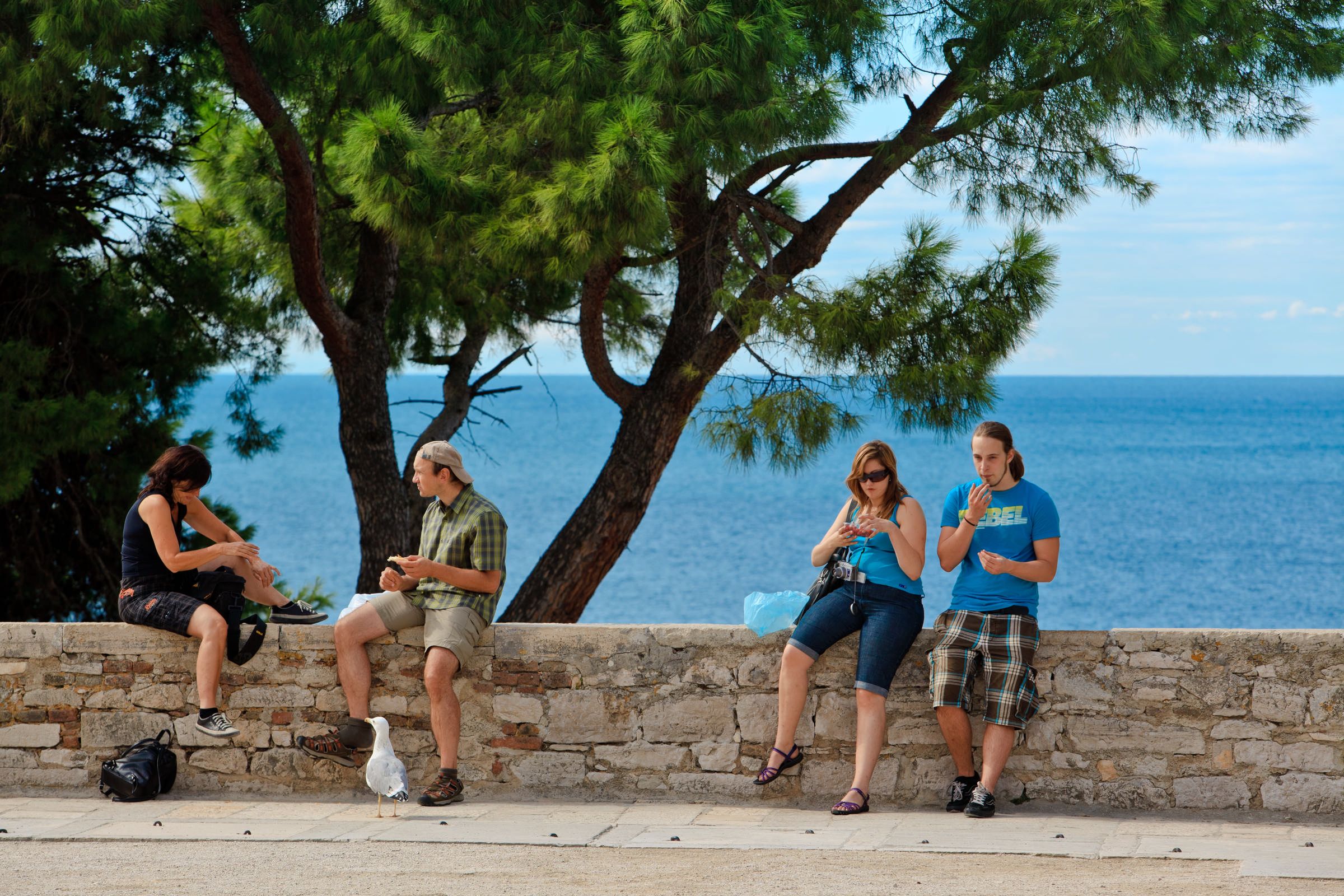
Prople in Rovinj, Istria / Copyright Romulić and Stojčić
Istrian mentality?
The director of the Istrian Tourist Board, Denis Ivošević, adds that Istrians are "organized, consistent and disciplined". And when that is the case, it doesn't bother two million tourists, or 250,000 of them a day during the summer, nor the thousands of Istrians who go to work in Italy or Slovenia every day. They are a real example that the new normal can be quite normal when things are arranged well.
"From the first day, we adhered to the prescribed measures. In Istria, it was difficult to see what was elsewhere on the coast, so tourists also complained that the waiters did not have masks. We immediately educated the employees on how to best protect themselves and their guests, and we also hired two people who only did disinfection. When the guests got up from the table, they would thoroughly disinfect everything every time," says the owner of the Pula tavern Boccaport Toni Draguzet and confirms that individual responsibility ultimately gives to the common good.
Sociologist Dražen Lalić does not deny that the mentality also has an influence.
"I don't like divisions by character. I am especially repulsed when the Dalmatian mentality is blamed for the spread of the infection in Split, and when the infection spreads in Zagreb, then the mentality is no longer mentioned. However, it is true, for example, that the half of Split that does not engage in tourism in the summer necessarily complains that there are too many tourists in the city. In Poreč or Rovinj, that is unthinkable," says Lalić, who blames inconsistencies around measures and the fact that some civil protection headquarters are run by insufficiently professional people for the bad epidemiological picture in most parts of Croatia.
For the latest travel info, bookmark our main travel info article, which is updated daily.
Read the Croatian Travel Update in your language - now available in 24 languages.
Arena Hospitality Group Paving Way for Year-Round Tourism in Istria
October 13, 2020 - To develop year-round tourism and adapt to new market conditions, Arena Hospitality Group (AHG) has decided to open two of its camps, one in Pula - Arena Stoja, and the other in Medulin - the recently renovated Arena Grand Kažela, throughout the year. A look at the offer presented this winter.
“Arena Hospitality Group's wish is to develop long-term tourism in the south of the largest Croatian peninsula in cooperation with the tourist boards of Pula, Medulin, and Istria. At the beginning of this challenging 2020, and after coming out of the scale of unprecedented quarantine, we witnessed the demand for vacations in camps as the most sought-after form of accommodation. We believe that this type of demand will continue in the future," said AHG when asked how they decided on this move.
HRTurizam reports that plenty of sunny days and a mild Mediterranean climate allow southern Istria to become a year-round camping destination. Also, the destination offers guests a variety of facilities throughout the year - from sports and recreational activities in untouched nature, to exploring the rich cultural and historical heritage, and enjoying the traditional tastes of Istria, said AHG, and added: "Guests, especially those who come from urban centers, increasingly express the need to escape from cities to nature where, in the fresh air, in an intimate environment of nature, they can relax from daily obligations and stress.”
During the autumn and winter period, AHG has adjusted the offer. In addition to classic services such as electricity, water, and sanitation, guests will also have heated toilets, reception and coffee bar, and a restaurant within each camp.
But we can't forget the content. Through various activities organized in cooperation with partners, AHG will offer more than just a winter camping vacation through various activities within the camp, as well as throughout the destination. They also organized transportation to the new city swimming pool in Pula and nearby shopping centers, as well as various animation activities within the camps.
"Regardless of the day and month, Istria offers many historical and natural attractions that will inspire every curious traveler. The 2,000-year-old Roman amphitheater in Pula, the archipelago of the Brijuni National Park, the tranquility of the landscape of Cape Kamenjak and its numerous hiking and biking trails, and picturesque historic towns fortified on the Istrian hills," said AHG about part of the offer, and emphasized that the most authentic of Istria can be experienced in autumn and winter.
During October, guests will be able to join the harvest of the precious Istrian fruit - olives, and in nearby Vodnjan, taste some of the best extra virgin olive oils in the world. By the way, this week, for the sixth year in a row, Istria was declared the best region in the world for extra virgin olive oil by Flos Olei.
In November, during St. Martin's Day, at one of the many local celebrations, they will be able to taste another top Istrian product - wine - and participate in the baptism of a young wine. This year, Istria has 60 wines with the Decanter label.
Istria has long been sufficiently branded through wine, olive oil, and gastronomy, as well as various events, from Teran Day to Truffle Day, and many smaller stories such as the new event "Autumn on a plate in Central Istria," which will take place from October 16 to 31, 2020, in restaurants in central Istria. During this event, caterers will offer a variety of traditional Istrian dishes made from autumn ingredients of the region, all to strengthen the gastronomic offer of central Istria and further connect family farms and caterers in the postseason.
Arena Hospitality Group is certainly paving the way for 365-tourism in Istria and is hopefully setting an example for other regions in the country.
For the latest travel info, bookmark our main travel info article, which is updated daily.
Read the Croatian Travel Update in your language - now available in 24 languages.
Join the Total Croatia Travel INFO Viber community.
Flos Olei 2021: Istria is the World's Best Olive Oil Region for 6th Consecutive Year!
October 9, 2020 - For the sixth year in a row, Istria is the world's best olive oil region, according to the results of Flos Olei 2021.
HRTurizam reports that in the popular publication Flos Olei, the so-called 'extra virgin olive oil bible,' as many as 71 olive growers from Istria produced such high-quality extra virgin olive oil that it deserved a prestigious award - inclusion in the new, twelfth edition of Flos Olei!
Namely, in the new edition, 73 oils from Croatia are included, of which 71 are from Istria and two from Dalmatia. Simultaneously, several Istrian olive growers achieved better results compared to last year, which is proof of significant work in raising the quality and application of the latest scientific and technological achievements in olive growing.
In 2021, Istria will once again be adorned with the title of the world's best olive oil region, in a winning streak that has lasted six years. This is especially important considering that the publication contains oils from all over the world, or from 54 olive-growing countries, and Istrian olive growers are in the company of the 500 best with a total share of 14 percent.
"It sounds unreal, and I would say pretentious, but for the sixth year in a row, Istria has been declared the best olive region in the world. Since its first edition in 2010, Istria has immediately taken an important role and positioned itself as the second-best olive growing region, just behind Tuscany. However, every year the advantage of Tuscany was smaller. At the end of 2016, it took the leading position that it has maintained to this day, but with a far greater difference than Tuscany previously had in relation to Istria. The fact that Istria has 71 olive growers and Tuscany 43 speaks volumes about what it looks like this year. An even more important fact is that over 1,000 samples from all over the world arrive for evaluation. After that, a selection of the 500 best in the world is made, and that within the 500 best Istria has 71, which is really impressive," proudly points out Denis Ivosevic, director of the Istria County Tourist Board.
It is essential to be aware of the fact that in no discipline, in any industry, sport, or any other important competition in places where reputation is gained and confirmed, does Croatia have as much success as Istrian extra virgin olive oil for six years in a row, Ivosevic emphasizes and adds:
"We are very proud of that fact, but it seems that a lot of work is still needed in our country, and also abroad, so that this primacy gets its full and true value; that we become aware of it first in Croatia and that then all those who promote Croatian gastronomy proudly point it out. In the expectation that next year we will reach at least one grade of 99, I believe that the time has come and that six years of confirmation is enough proof to realize that we are the best in the world in something."
This worldwide success certainly contributes to the branding of Istria and Croatia as a gastronomic destination, given that extra virgin olive oil is the main addition to dishes and the basic food product of Mediterranean cuisine, and due to its organoleptic and medicinal properties, it is appreciated almost everywhere in the world.
Significant investments in olive oil production took place in Istria in this extraordinary year.
The Chiavalon family (Vodnjan) opened a new olive center/modern building that includes a new Mori olive press, with a new cellar, tasting room, sales point, and warehouse, while the Ipša family (Ipši, Oprtalj) also opened a new olive center/refurbished and revalued a traditional building, with a new Mori, cellar, tasting room, point of sale, Istrian tavern and warehouse.
The Vanđelić (Bale) family also opened a new olive center/renovated and revalued a traditional building with a new Mori, cellar, tasting room, and sales outlet, combined with fruit vegetable production.
The Galić family (Kostanjica, Grožnjan) opened a new cellar, tasting room, and sales point, while the Oleum Maris company did the same, and the Beletić family (Novigrad) introduced the PIERALISI.
The guide will soon see the light of day. On 884 pages, it will be published in two language variants (Italian-English and Italian-Chinese) and will present selected countries from five continents and 86 world maps of olive groves. The list of all Croatian award-winning olive growers can be found HERE.
For the latest travel info, bookmark our main travel info article, which is updated daily.
Read the Croatian Travel Update in your language - now available in 24 languages.
Excellent Epidemiological Situation: 'Istria is Again an Example to The Rest of Croatia!'
October 6, 2020 - According to the latest data, only one case of coronavirus infection has been recorded in Istria today. In the past two weeks, only 13 cases have been recorded, which puts this Croatian region in the green zone according to the criteria of the European Union, reports Hina.
Last week, from September 28th to October 4th, 2020, Istria recorded eight new cases, and a week earlier only five. As of October 5, Istria had no cases of coronavirus infection and only 9 active cases of infection, which is the lowest number of cases when compared to other counties, reports Jutarnji.
The excellent epidemiological situation in Istria was also announced by the Mayor of Pula, Boris Miletić, on his Facebook page, where he posted a photo showing that Istria is the only 'green' zone in Croatia.
“Istria is again an example to the rest of Croatia! Bravo Istrians!” the mayor wrote below the photo.
At the same time, neighboring Primorje-Gorski Kotar County and Slovenia have a more difficult situation and record numbers of newly infected people.
The head of the Epidemiology Service of the Institute of Public Health of the Istrian County, Dr. Jasna Valić, consciously said that "the situation in Istria is still good and stable, but that can change overnight."
"We are aware that the coming months will not be easy and that is why we once again appeal to the citizens to be responsible and careful. Of course, we all hope that there will be no 'clogging' of the health care system, which is already happening in Spain, France, and Italy, which are again on the verge of complete closure," said the leader.
In Novigrad, there has been recorded a case of infection of a kindergarten teacher, which is why self-isolation measures were determined for 120 children and 30 employees of a preschool institution on Saturday, October 3rd, 2020.
Istria had a relatively good epidemiological situation during the pandemic, which is why they appealed to other countries to decide to put it on the red list according to the regions of Croatia, and not the whole country.
For the latest travel info, bookmark our main travel info article, which is updated daily.
Read the Croatian Travel Update in your language - now available in 24 languages
Istria Celebrates World Tourism Day for 5th Time: What About Your Region?
September 19, 2020 - Istria celebrates World Tourism Day for the fifth time on Saturday, September 26, and Sunday, September 27, from 10 am to 6 pm at 63 points throughout the county.
HRTurizam reports that this year, for the fifth time in a row, the Istria County Administrative Department for Tourism organizes and encourages inclusion in the celebration of World Tourism Day to draw attention to the local population and tourists to a number of facilities and attractions Istria.
This year, World Tourism Day is held under the motto: Tourism and Rural Development.
The celebration of the World Tourism Day in Istria in 2020 will be held on Saturday, September 26 and Sunday, September 27 from 10 am to 6 pm at 63 points throughout Istria where tourist attractions open their doors with discounts of up to 50% or completely for free.
"We make our offer more accessible so you can get to know the contents and attractions in Istria as much as possible, and thus we strengthen the promotion of Istria. All those interested, in addition to adrenaline parks, museums, castles, caves, protected areas, workshops, performances, and more, will be able to visit the many winemakers, olive growers, truffle growers, and other local producers who joined the action. Numerous local tourist boards joined the event with their programs," said the head of the Istria County Board of Tourism, Nada Prodan Mrakovic, and stressed that in accordance with this year's theme of World Tourism Day and this event, they want to point out local products, offer and service and encourage local consumption and thus support local facilities.
"Thus, by encouraging consumption, we contribute to the preservation of jobs, we encourage sustainable and responsible development of tourism, and finally, we point out the importance of tourism that affects the economic, social, cultural, and environmental segments," concludes Prodan Mrakovic.
For the latest travel info, bookmark our main travel info article, which is updated daily.
Read the Croatian Travel Update in your language - now available in 24 languages
Mostly German Tourists in Istria, Can September be Saved?
September 8, 2020 - The Istria County Tourist Board director Denis Ivosevic said that there are mostly German tourists in Istria, and revealed what needs to happen to save the season.
Glas Istre reports that sixty-seven thousand guests stayed in Istria during the first weekend of September, most of them Germans - 40 thousand of them - which, according to the director of the Istrian Tourist Board, Denis Ivosevic, is quite expected considering that Germany is the only country in the region that did not put Istria on the red list of epidemiologically uncertain areas.
The Istrian police said that from Friday to Sunday at 12 pm, 33,536 passengers entered, and 35,678 passengers exited Croatia through the three largest road border crossings in Istria - Kaštela, Plovanija, and Požana. Foreign citizens account for 80 percent, and among them, Ivosevic confirms, most are Germans.
There are guests from other countries, which, under normal circumstances, represent a larger part of tourist traffic, such as Austria and Slovenia, but much less, says Ivosevic. Altogether, last weekend, he reveals, there were one hundred thousand fewer guests than at the same time last year. As before, due to epidemiological recommendations, tourists mostly opted for overnight stays in camps and private accommodation.
"The main part of the season is over. Now we are left with the hope that Slovenia could regionally select us as a safe area. That way, we would save the coming weekends," says Ivosevic about saving September and what's left of the tourist season.
Asked if the Istria County Tourism Commission, an expert and advisory body established in April to help coordinate activities to save the tourist season, has a plan and program for the postseason, Ivosevic said that the Commission acted when the repertoire was a different topic. Now, he says, the situation is a completely new story.
The main part of the season, the peak in August, is over. Ivosevic confirmed that they recorded more than good results.
"I look at the results of August from two different aspects. The first is the positive one, and that is that despite all the predictions about the weak season, we still managed to achieve more than a good result. Tourism peaked in the first half of August, and that’s great. Unfortunately, this is followed by the second, negative aspect. It refers to the fact that we managed to score an own goal and miss the opportunity to become true champions of this year's tourism by the end of August and September," says Ivosevic and continues:
"Instead, we ended up on the red list in many countries, which is very bad for the reputation and the end of the year, and can be a serious handicap in promoting the destination for next season," said the director of the regional tourist board after August.
For the latest travel info, bookmark our main travel info article, which is updated daily.
Read the Croatian Travel Update in your language - now available in 24 languages
Join the Total Croatia Travel INFO Viber community.
Meet HGSS The Croatian Mountain Rescue Service
August 19, 2020 – All weather, all terrain, all year round – meet HGSS The Croatian Mountain Rescue Service, amazing volunteers who will never let you down
They're never far from the news. For the last two weeks, members of HGSS The Croatian Mountain Rescue Service have yet again been on the TV news every night. They're leading the search for a summertime visitor, a Polish hiker missing on Biokovo mountain.
But, watch again this winter and, for sure, they'll be in the headlines once more. Whether, they're scaling mountain ranges in the unbearable heat of high summer, searching underwater caves, flooded rivers or the sea, breaking through wild forest or trudging through metres of snow, they undertake their search and rescue missions over every terrain, in every weather condition, in every month of the year, all across Croatia. And, they all volunteers.
Marc Rowlands meets the head of service for HGSS The Croatian Mountain Rescue Service and three of its volunteers to find out who they are and what makes them do what they do.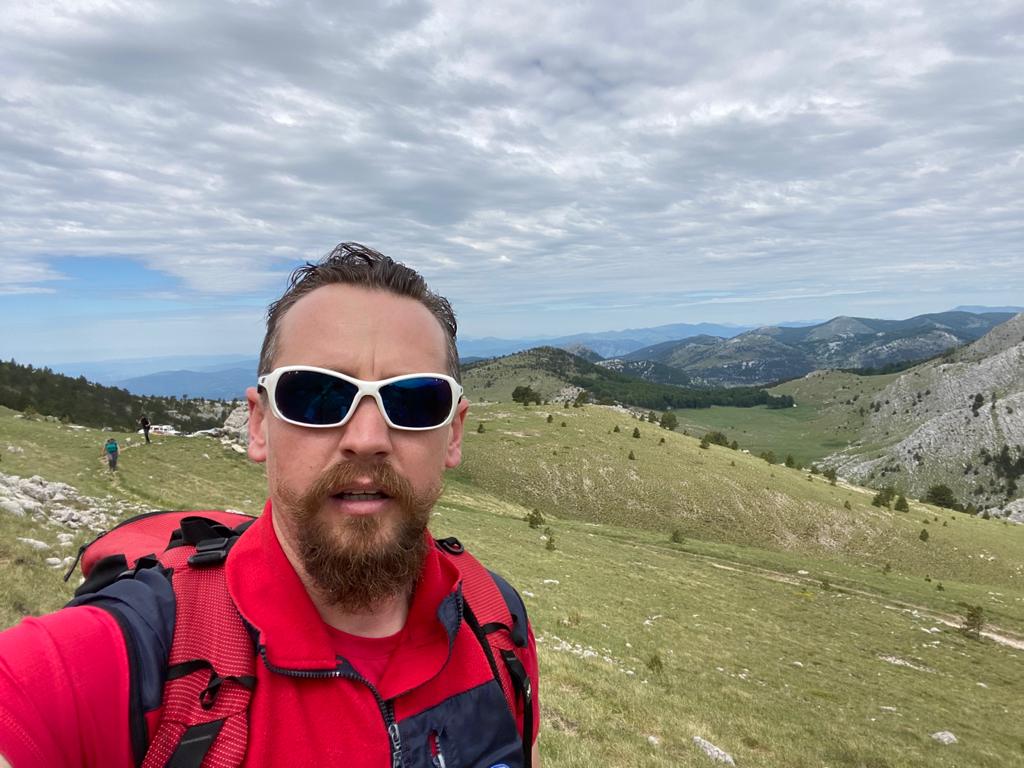
Josip Granić, head of service for HGSS The Croatian Mountain Rescue Service
My name is Josip Granić. I'm the Head Of Service for HGSS The Croatian Mountain Rescue Service. We've had an extremely busy couple of weeks. Being head of service for an organisation like this under such circumstances means you're always on the phone; co-ordinating, talking to outside organisations, members of the press. Communication. It's a 24/7 job, 365 days a year. If people need help, you can't take a holiday. Not at this level of the organisation.
We have around 1000 members. There are 11 paid positions in the main organisation and 25 people we pay to run the administration in each of the teams or stations we have. All of the members who perform the search and rescue are volunteers. We have pilots, surgeons, nurses, students, professors, every part of society.
I'm originally from Kaštela, but my home station is in Karlovac. I've been there for 15 years. I've been Head Of Service for two. Since I assumed the position, I've spent most of my time in the car. I travel all over Croatia.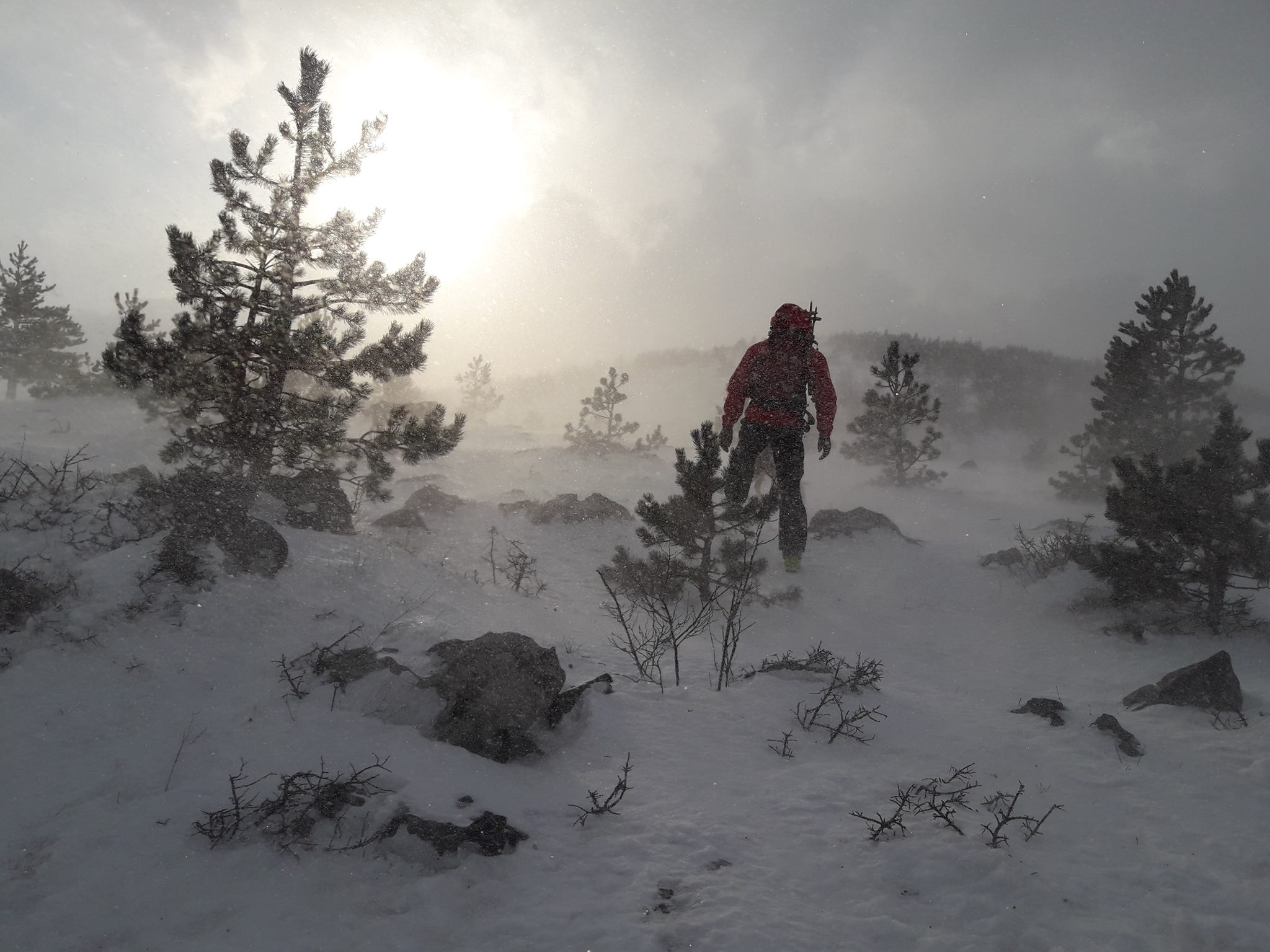
HGSS The Croatian Mountain Rescue Service missions can be hampered by extreme weather conditions © HGSS The Croatian Mountain Rescue Service
To get a certified position as a mountain rescuer in Croatia you all do the same training. It doesn't matter if you come from Slavonia, Dalmatia or Istria, you must have the knowledge and ability to deal with circumstances in any terrain; caves, pits, mountains, on snow, underwater.
Depending on where your station is, the type of call-outs you get could be very different. In Slavonia, 90% are for missing persons - searching forests, rivers, and in floods. We've had a big search on Biokovo mountain for the past 16 days. The stations from Split, Makarska, and Dubrovnik were at first involved, then teams from all over Croatia. It's not the same as Slavonia. The terrain is very different, so you have to be good at a particular set of skills. But, the largest percentage of call-outs is still missing persons. It's 70% of our work nationwide. The other 30% are rescues.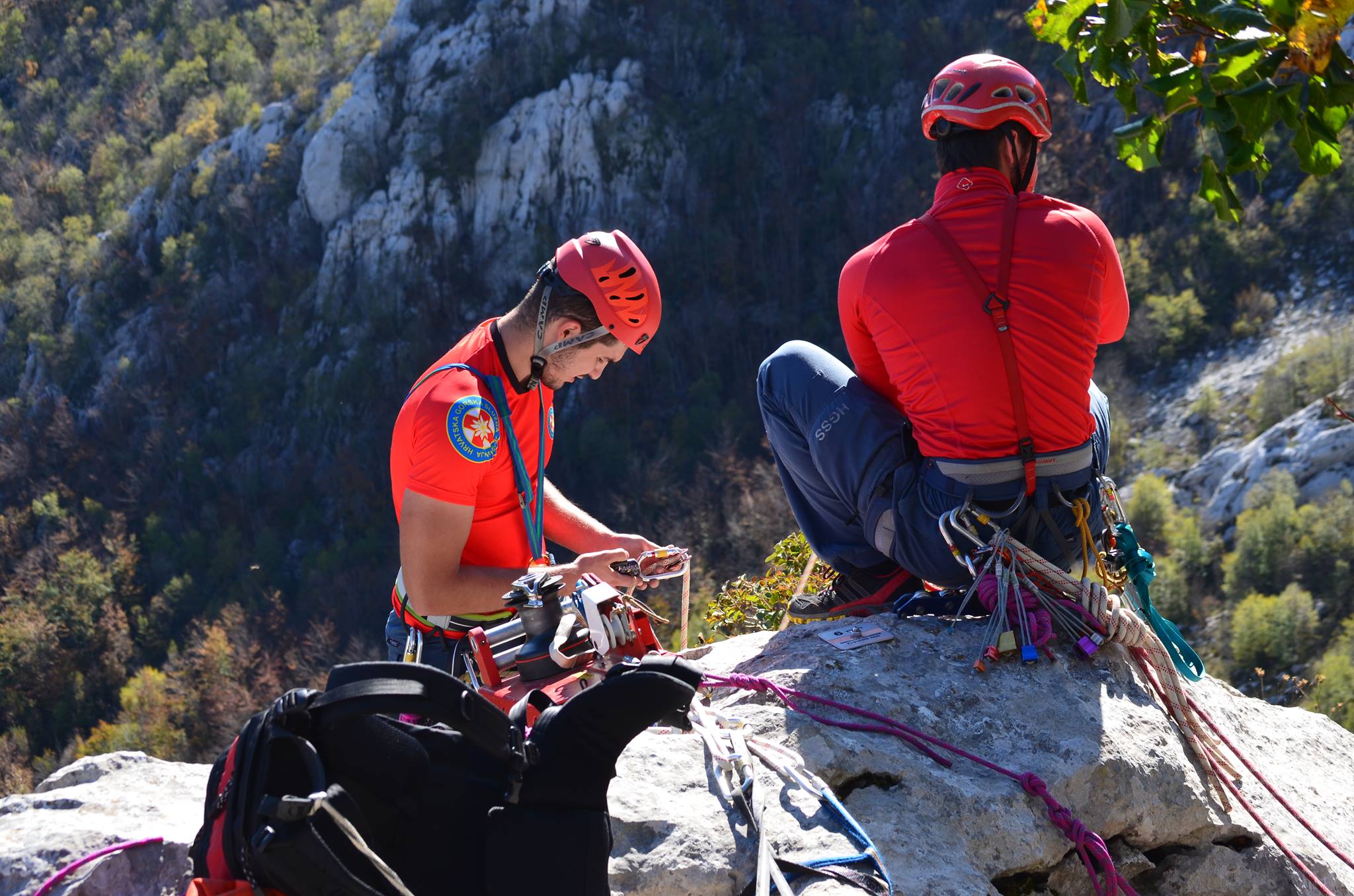
HGSS volunteers are educated to use a wide range of technical equipment. They are trained to operate in all the different kinds of terrain found across Croatia © HGSS The Croatian Mountain Rescue Service
There are usually 800 – 1000 missions a year across the country. We get roughly the same amount of calls in colder months as in warmer months. Only, winter months can be busier. The terrain is more difficult. There are some villages in Croatia – usually where the front line of the fighting was, around Karlovac, Kordun, Lika – and when it snows, it can be almost impossible to reach those places. But, some older people still live there. It can take days to reach them on snowmobiles, then skis, to deliver food or medecine. The other busiest places in winter are the ski resorts - Platak, behind Rijeka, and in Zagreb, on Sljeme. There are teams stationed in those places throughout the snow season.
What's the greatest danger of the job? Almost everything. Nothing in this job is easy. The greatest dangers we face are the same facing those that we rescue - underestimating the environment, nature, the conditions. That's where our training comes in.
In mountain rescue, we separate dangers into subjective, objective and technical. Subjective is the stuff you're guilty of - lack of preparedness, knowledge or equipment. Objective dangers are the ones you can't control, like sudden changes in weather, or avalanche. If you're sensible and informed, there should be no objective danger.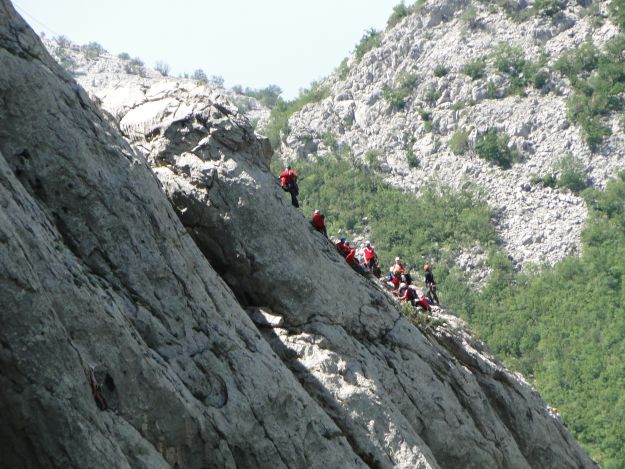
HGSS on a mission, clinging to a steep incline in Paklenica © HGSS The Croatian Mountain Rescue Service "People need to be aware at all times on the mountains. By the time most people think they may be in trouble, they've usually been in trouble for five or ten minutes already" Josip Granić.
80 – 85% of the people we rescue are Croatian. Only 15 – 20% are guests. People from Czech Republic, Slovakia, Poland, (Austria and Slovenia too) tend to enjoy nature more. They like hiking. That's the reason there are typically more rescues for those nationalities than there are for British, Belgian, French, Italian, America, Canadian or Australian guests. I don't remember the specific year, but sometime between 15 and 20 years ago we had a season where 5 or 6 Czech nationals were being searched for or, sadly, turned up dead. The media covered it and ever since there's been this myth that all the people who get into difficulty are Czech.
The question about expensive helicopter rides - why don't you charge the people you rescue - has been here forever. It's like this - if you're a tourist and you have a car accident in Croatia, the fire service, police and an ambulance will come. You won't get charged. We are a tourist country. According to international agreements, we are obliged to make everything safe for residents and guests alike. We are here, just like the fire service and police, to do our part. The Croatian air force is responsible for the helicopter rides and I have to give credit to them - they are crazy good pilots. Amazing. Even if we did charge everyone we saved - and most of the 85% of Croatians we save would struggle to pay - it still wouldn't be anywhere near the money required to run this service.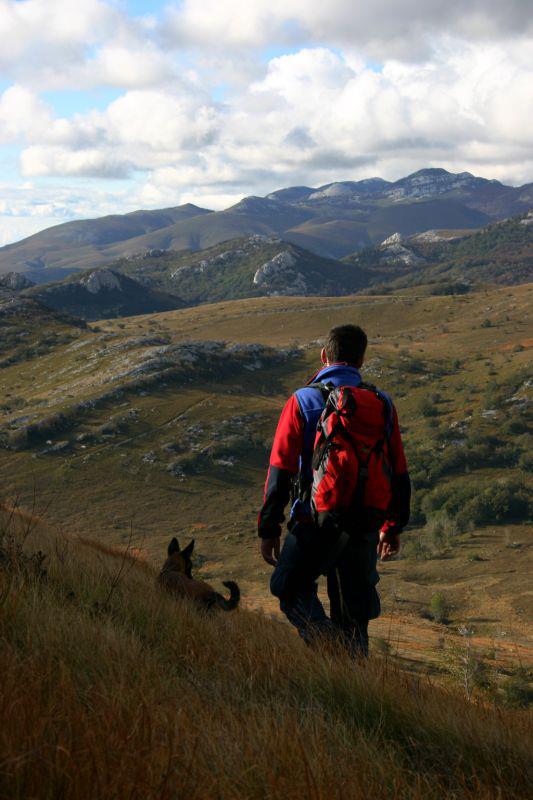
The Croatian Mountain Rescue Service used specially trained dogs on their searches © HGSS The Croatian Mountain Rescue Service
In 2007, I got a new search dog. It came from the Ogwen Valley Mountain Rescue service in North Wales. We cooperate a lot. We were sent out on a job to look for a three-year-old male child who had gone missing near Požega at the beginning of January, wintertime. His grandma was watching him and they were in a house on the edge of the woods. Early in the morning, he was playing with a dog. It suddenly ran into the forest and the boy chased after him. The grandmother didn't see it happen. I found him using my new dog, just after 8 o'clock the next morning. He'd been alone in the freezing forest for almost 20 hours.
Time is really moving fast on a job like that, because it's a kid and because it's so cold. Survival rates in such conditions are not good after 24 hours. When I found him, saw that he was alive, those big eyes looking up at me, it's a crazy feeling. You can't describe it. You can't compare it. A lot of positive emotions.
Every mission is special. We meet them all with the same level of determination and professionalism. But, it's the ones where you know you've really saved someone that stand out in the memory. Not the broken leg, where you transported someone – sure, that's an excellent job. But, when you know you've saved someone's life, that they definitely wouldn't be here now if it weren't for you, that's what makes it all worthwhile.
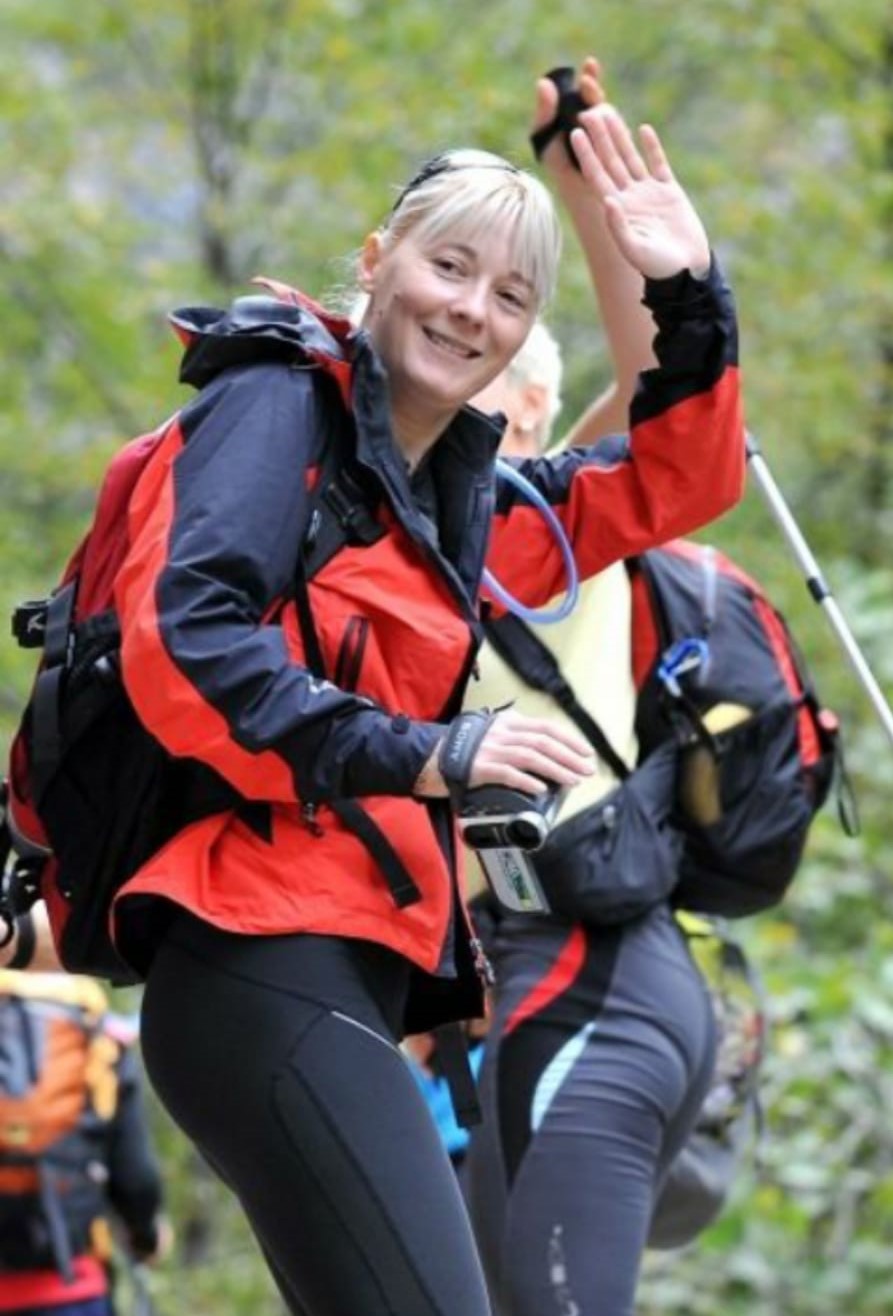
Jana Mijailović, volunteer for HGSS The Croatian Mountain Rescue Service
My name is Jana Mijailović, I'm 48 years old and I'm from Zadar. I finished school to be a teacher, but I never did it. My husband and I run a company that does plastic and aluminium windows for houses.
I started to go into the mountains when I was at high school. I never had the ambition to be part of mountain rescue services – people just noticed me on the mountains. They said I'd be good at it and asked me to join. I met my husband on the mountains. We are both volunteers for HGSS The Croatian Mountain Rescue Service. I've been doing it for 16 years.
I was a member of the first and second all-female Croatian expeditions to the Himalayas. We first climbed Cho Oyu in 2007, then Mount Everest in 2009. Croatia is the only country in the world that has only one successful male climber of Mount Everest, but four successful female climbers. I sometimes work as a guide too. I guess you could say I'm all about the mountains.
Being a climber, an Alpinist, I know that if I get into trouble, it's only my HGSS colleagues who can help. I feel this instinctively. I cannot be in the house, safe and warm, knowing that maybe someone needs help that only I can provide.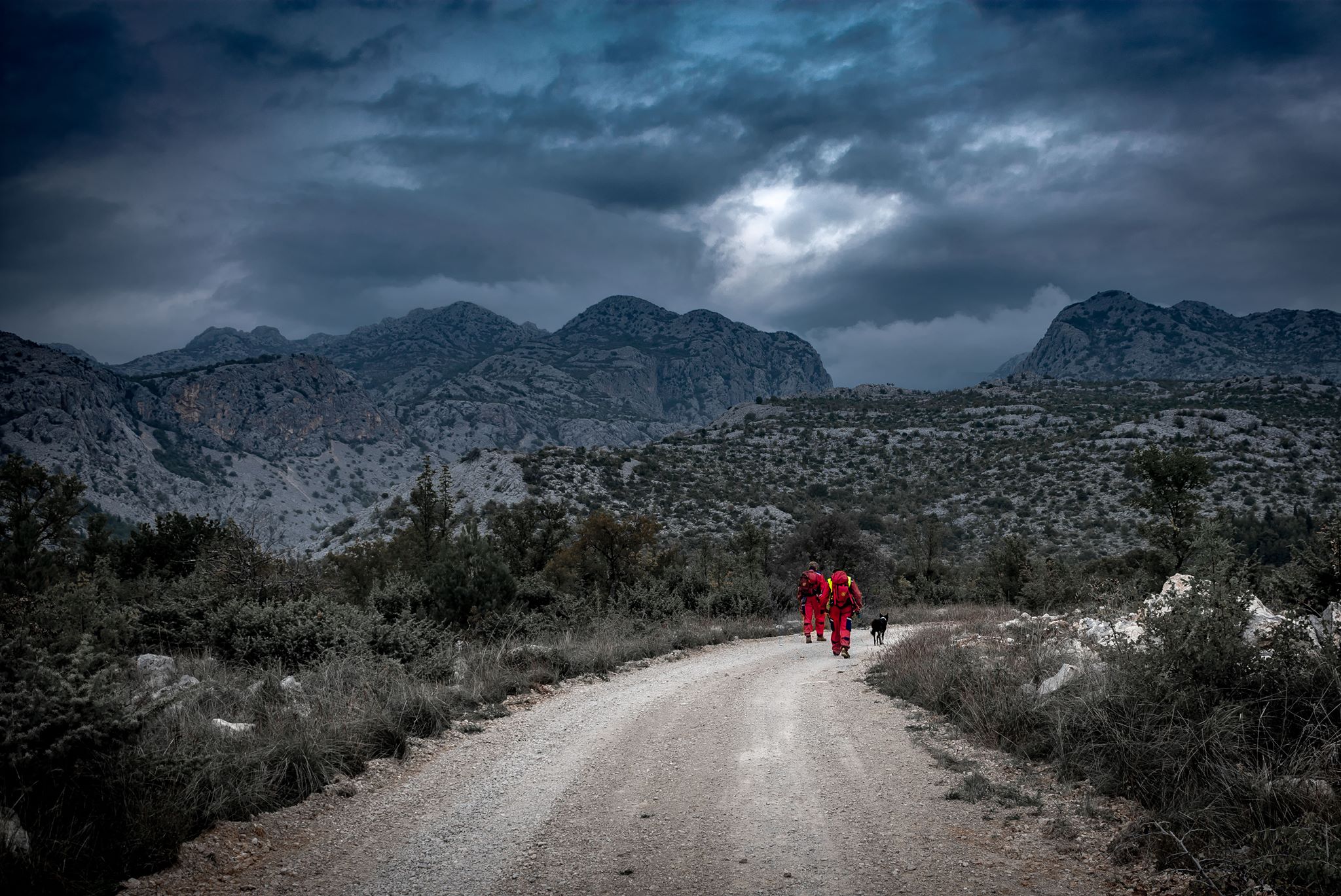
HGSS The Croatian Mountain Rescue Service members entering Paklenica under foreboding skies © HGSS The Croatian Mountain Rescue Service
I've really been on so many expeditions with HGSS. My station are on duty in the season at National Park Paklenica and I'm now the coordinator. Climbers from all around the world come and so there are many interventions. None of them are easy because the terrain is incredibly difficult. You really have to be in shape and know the techniques inside out.
I'm very proud of my statistics. Everyone I've rescued, who was alive when I reached them, is still living today. Unfortunately, not everyone we reach is alive when we arrive.
I remember one time, my husband and I were having dinner. We were arguing about the techniques and knots for moving a stretcher down a vertical climb. The training is so intense, you really have to know it well, and I guess that's just the kind of people that we are, that we would be arguing about it in our free time. Ha! He told me, "Why do you care? You'll never have to do that," because usually, it's really strong guys who do that specific job. If you're on a 400-metre-high section of rock, it really takes a lot of muscle.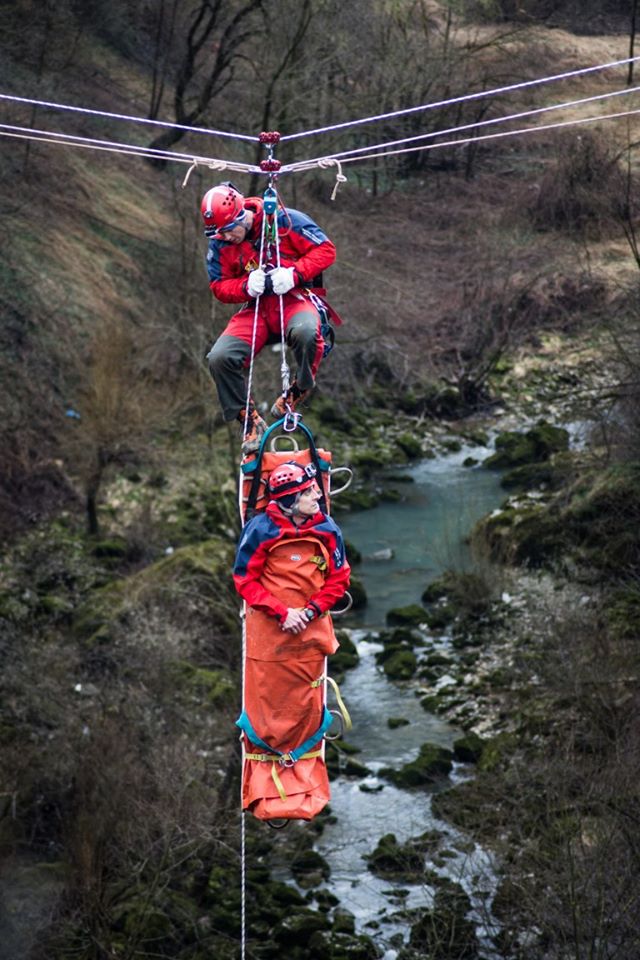
Ascending from a valley floor or descending from a mountain peak with a stretcher is a technically difficult operation, often hindered by darkness and adverse weather conditions. It requires a lot of training and a lot of muscle © HGSS The Croatian Mountain Rescue Service
In the evening, just two days later, we were called out to rescue an Italian guy who broke his leg on Anića Kuk. It's a really mighty part of the stone. And the leader of the expedition asked me to go on the stretcher. They pull you down on the ropes and you have to push very hard to keep the stretcher, the person you're carrying and yourself away from the rock, while balancing the weight of all three. It was dark, raining and with lots of Bura, the incredibly strong wind that sometimes hits us. That's probably my most memorable rescue.
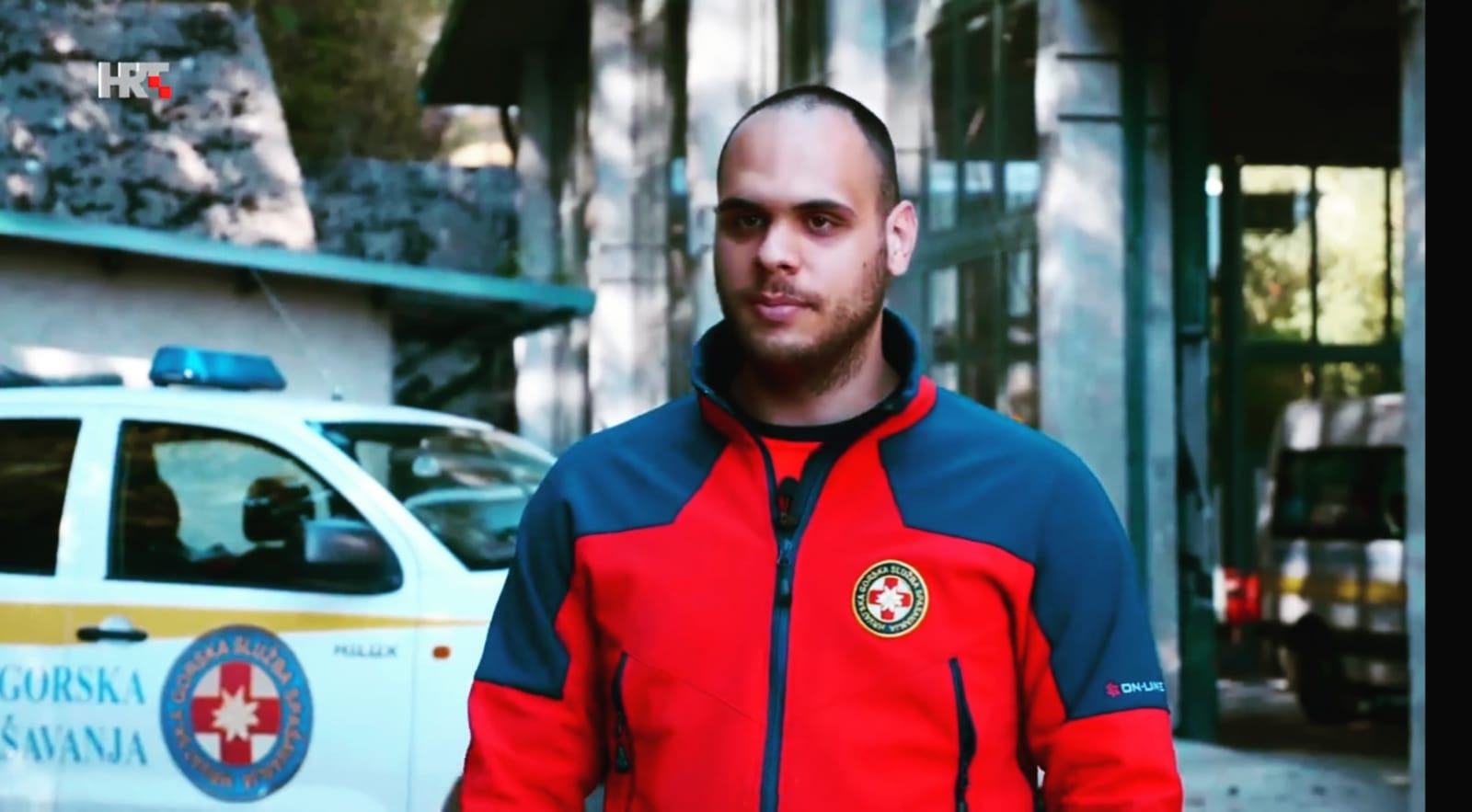
Petar Prpić, firefighter and volunteer for HGSS The Croatian Mountain Rescue Service
My name is Petar Prpić, I'm 25 years old and I'm from Hrvatska Kostajnica, just on the Croatian-Bosnian border. My station is in Novska. In my full-time job I'm a professional firefighter. I guess I have two dangerous jobs. Well, one job and one hobby.
I've always been interested in the outdoors – mountaineering, hiking, canoeing. But, that's not why I joined HGSS The Croatian Mountain Rescue Service. I just wanted to help people. I don't know, I guess it's just something in me.
We have a lot of rivers in our area. During the times of flood, we get a lot of call-outs. Our part of the country has a high percentage of elderly people in the population. A lot of them live in small villages, on the edge of the forest. We get a lot of call-outs for searches. Especially in the autumn when people go out looking for chestnuts or mushrooms. But, like all the stations in Croatia, we are here year-round if there are any actions in other parts of the country that need us.
In some areas, HGSS The Croatian Mountain Rescue Service are frequently called out in response to flooding. This picture shows HGSS members on operation during the 2014 floods. In that year, flooding across the whole region was so bad that HGSS members operated not only in Croatia, but also donated their services to neighbouring Bosnia and Serbia © HGSS The Croatian Mountain Rescue Service
I was just on the search in Biokovo. The head of service called me and asked me to go. I first had to get some free days from my job. I called my boss, Zvonimir Ljubičić, chief of the fire department. He's great, very understanding, and he gave me permission. Two years ago I was called to Rab. Very hard operation, very difficult terrain.
Late last summer, we were called out to look for an older man near Glina. It was around 11 o'clock in the evening. He'd gone to look for mushrooms in the afternoon and never came back. Police were there and they sent for us.
The man had a cell phone on him, but there was no signal. There was no location given off the phone. We were a team of four, split into two teams. We went up into the woods above Glina and concentrated our search on areas where we could see there was no telephone signal on our phones. We were yelling in the dark. After an hour of search, someone answered. He'd been missing since 2pm. We found him at 2am. He was just lying there, uninjured but unwell, unable to move.
The reason it sticks in my mind is that the next day, in the morning, his daughter called me. She was so thankful, so emotional. For sure we saved his life. None of the other emergency services who were present could find him. It was down to us. We finished the operation at about 6am and then all four of us had to go immediately to our regular jobs.
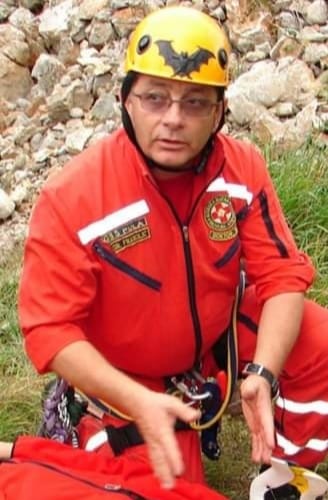
Mario Franolić, physician, ex-commando and volunteer for HGSS The Croatian Mountain Rescue Service
My name is Mario Franolić and I'm 60 years old. I'm the chief of the mountain rescue service in Istria. I travel throughout Croatia because I'm also an instructor for the medical commission of HGSS. I was born on island Krk. I'm based in Pula although I work in Rijeka. I travel a lot between the two. I've been with HGSS The Croatian Mountain Rescue Service for 18 years.
In my day job, I'm a physician. I am a senior mentor at the Institute for Underwater and Hyperbaric Medecine in the Clinical Hospital Rijeka. I'm an expert in my field of emergency medecine. I've been doing it for almost 30 years.
When I was young, I trained to be a physician in Belgrade. It was then the best medical faculty in Yugoslavia. At the same time, I also started spelunking (cave exploration). I've been doing it since 1978. Later, I was a physician in the military underwater commando unit. I lived in Austria for five years, but when I came to Pula, they were just starting the HGSS The Croatian Mountain Rescue Service station here. They asked me for help because they didn't have any medical professional on the team. I accepted. It would be a waste not to use all these skills I have.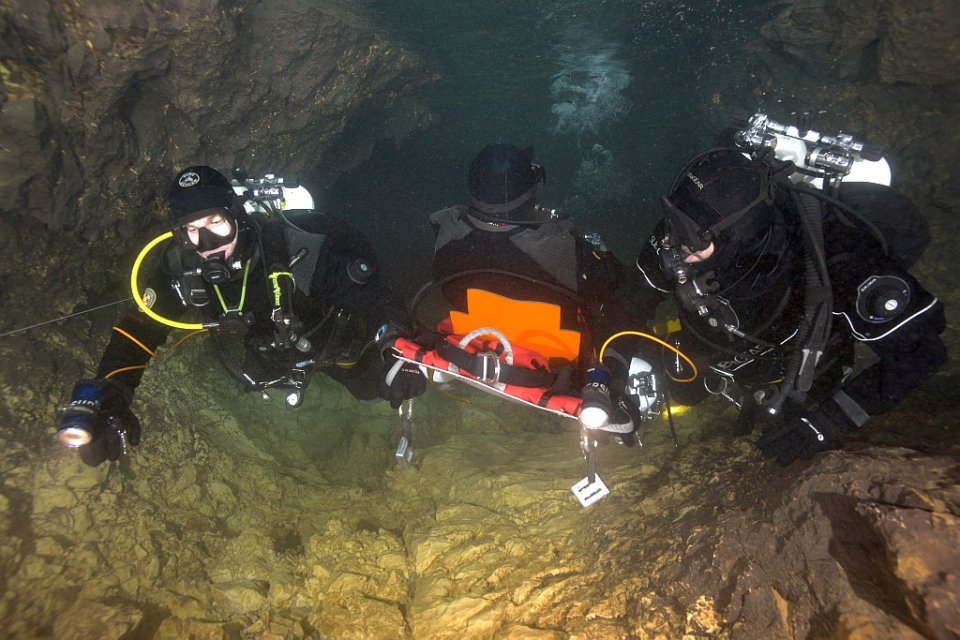
Specialist teams from HGSS are trained in underwater rescue from caves. Such caves exist all over Croatia in the karst rock, and also on some islands © HGSS The Croatian Mountain Rescue Service
Sometimes, our status as volunteers can give us problems. Although we have official duties, we are more like an NGO than something like the police. There can be legal implications. I remember one situation, very acute because a paraglider fell from the sky. None of his colleagues saw him fall. Paragliders go into the air together, but then they each branch off to do their own thing.
We had no idea about the location. We started from the last point of sighting, knowing that it could be very far from the place where he actually fell. But, we had to start somewhere. We had one mobile phone signal direction. But, you need three in order to locate someone. We only had a line on the map.
In the past, HGSS The Croatian Mountain Rescue Service sometimes had difficulties because the telephone companies wouldn't give us the information we needed in order to triangulate the position of a missing person. They would only give it to the police. But, it's a race against time. We searched for this man all day and all night. In the morning, some Croatian paragliders made private contact with a guy from the phone company. They begged him to release the information we needed. Although he could lose his job, giving such information to private citizens, he did it.
We found the man about 150 metres from where we were. Sadly, he was already dead. It was very small comfort to see that he had died instantly, on impact. It's unbearable when you reach someone you could have saved if only you had got there quicker, especially in an instance such as this, where we were hindered by a lack of information that was available. I think it moves more quickly now, but still we have to go through the police.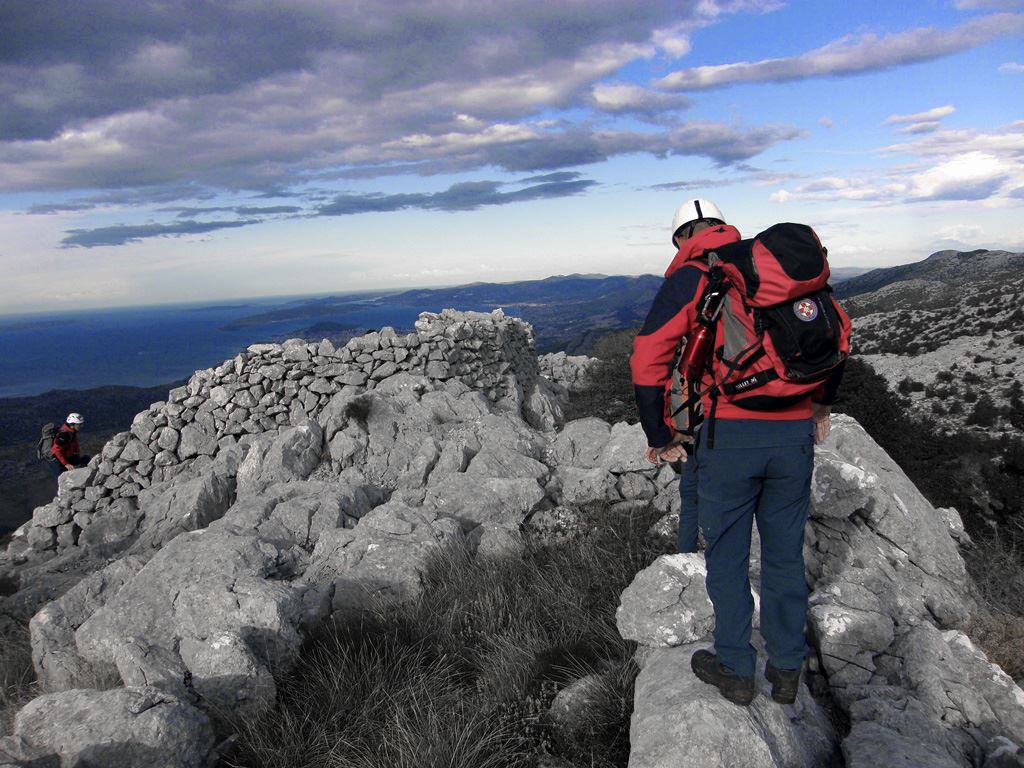
© HGSS The Croatian Mountain Rescue Service
One of the most emotional operations I went on was around five years ago, the rescue of a young girl - maybe two and a half to three years old – who got lost in the woods in a small place in central Istria. She chased into the forest after some dogs around 10 or 11 in the morning. The family saw immediately that she had disappeared and started to search. About two hours later, we were called out. It was impossible for the family to find her.
About 300 people came – my station, the Rijeka station, hunters, firemen, police and volunteers. In such an operation, the police are the lead service. But, 99% of the time they leave the organisation of the search to HGSS The Croatian Mountain Rescue Service. We are the only organisation who is very well educated in organising searches. When other people do searches, they use intuition. But, people all have different intuition. It can be chaotic. We are highly trained for this. There are procedures, recognised internationally, that we follow. We found her early in the morning, at around 7 o'clock. The dogs were lying on each side of her, giving her warmth.
All photos courtesy volunteers and HGSS The Croatian Mountain Rescue Service
Opatija Mayor Urges Croatian Government, Headquarters to Divide Country into Epidemiological Regions
August 15, 2020 - Opatija Mayor, Ivo Dujmic, asked the Croatian Government and National Headquarters to divide Croatia into epidemiological regions as soon as possible. Dujmic believes that the counties of Istria and Primorje-Gorski Kotar should not bear the consequences of the unfavorable situation in Split-Dalmatia County.
We have transmitted his post on Facebook in its entirety:
"Urgently divide Croatia into epidemiological regions"
"This way, I must express my dissatisfaction with the current situation, i.e., that the Civil Protection Headquarters is avoiding dividing Croatia into regions and thus save the tourist season in those counties that have a favorable epidemiological situation.
I am primarily thinking of Primorje-Gorski Kotar and Istria counties, which have, by far, the most tourists in Croatia and, in addition, have a very favorable situation with the coronavirus. We must keep these good tourist figures, that is, take care of the existence of many families, entrepreneurs who depend on tourism, but also the budget of our cities, counties and the state itself.
I don't even have to say how many problems the citizens of Primorje-Gorski Kotar and Istria counties have who work in neighboring countries and go to Italy or Slovenia daily or weekly. Why do the new measures of the Headquarters apply to the whole of Croatia, i.e., why do our entrepreneurs have to bear the consequences of the bad epidemiological situation in Split-Dalmatia County?!
Therefore, I ask the Government and the Civil Protection Headquarters of the Republic of Croatia to urgently divide Croatia into epidemiological regions, i.e., green, orange and red regions, which would be a clear message to other countries, especially those on which our tourism depends. I also ask that the measures be determined by regions and not linearly for all counties.
We don't have time anymore; decisions must be made as soon as possible!”
For the latest travel info, bookmark our main travel info article, which is updated daily.
Read the Croatian Travel Update in your language - now available in 24 languages!
Big Blow to Croatian Tourism: Italians Canceling Reservations on Coast
August 14, 2020 - Italy's restriction on travelers returning from Croatia has already proven to be a big blow to Croatian tourism.
Italy yesterday restricted all travelers returning from Croatia, Greece, Malta and Spain. Namely, travelers need to prove that they have been tested in the last 72 hours and that they are negative for the coronavirus. If they can’t, they have to commit to being tested within 48 hours in Italy. This new measure, of course, is no friend of Croatian tourism.
Index.hr reports that the news caused concern among Italian tourists who are canceling their trips to Croatia.
"This is a decision made yesterday, so we are already recording the cancellations of the reservations themselves," camp director Massimo Piutti told Nova TV.
"We've been receiving calls all morning from Italian tourists who are upset about this decision. However, they still show interest in Croatia and want to come to Croatia," says Viviana Vukelic, director of the Croatian National Tourist Board in Italy.
And for those who are already there, the decision of their government is not clear.
Overnight holidays have become more complicated for Italian tourists who are vacationing in Croatia, and there are currently about 46,000 of them.
"I'm surprised because I think we have too many cases in Italy. I don't know now exactly how it is in Croatia, but I think you have had relatively few cases compared to Italy," one Italian woman told Nova TV.
Boris Zgomba, president of the Association of Travel Agencies at the Croatian Chamber of Commerce, says he does not understand why Italy implemented such a move.
About 30,000 Italian tourists are currently vacationing in Istria and Kvarner, which is two-thirds of their total number in the country. They are worried about the new information, but they don't know anything yet.
"We don't know anything yet. We don't understand, if we don't get tested, will anything happen to us? Is it my responsibility, will I report to the hospital? At least they should have told us that before, not now that we're here for three days now," one tourist told HRT.
The Chief of the Civil Protection Headquarters of Istria County, Dino Kozlevac, said that the decision was disappointing.
"I don't think we are so bad in epidemiological terms, especially since they know which regions in Croatia are more vulnerable, which have fewer cases. Istria is a completely safe region for them, both Primorje-Gorski Kotar and most of the entire coast. Therefore, it saddens us because it will complicate the whole situation around tourism and is definitely not good," said Kozlevac for HRT's show Regionalni Dnevnik, adding that there must be some other reasons for that decision.
"I guess it is a tourist decision. Croatia is a hit this season; there is a lot of tourism, we are fighting the virus in parallel, successfully, less successfully, successfully again. Therefore, there will probably be some reason," said Kozlevac.
For the latest travel info, bookmark our main travel info article, which is updated daily.
Read the Croatian Travel Update in your language - now available in 24 languages!
Istria County Using Foreign Journalists, Influencers and Bloggers to Attract Tourists
August 6, 2020 - The Istria County Tourist Board brought in several foreign journalists, influencers and bloggers to help promote the region during the coronavirus pandemic.
Glas Istre writes that the tourism sector has found itself in big trouble and a rather tricky situation given the extraordinary circumstances due to COVID-19. Nevertheless, in the first half of 2020, the Istria County Tourist Board managed to animate several prominent foreign journalists, influencers and bloggers who visited Istria as part of individual and group trips and agent trips from various countries in cooperation with the Croatian Tourist Board and various partners, points out Denis Ivosevic, director of the Istria County Tourist Board.
"From the very beginning, the situation was very uncertain, and now, as the circumstances improve over time, the PR activities of the Istria County Tourist Board are intensifying. In cooperation with the PR partner for the German and Austrian market ART RedaktionsTeam, we organized the reception of journalist teams from several important German and Austrian media, including Fallstaff, "a la carte", Kronen Zeitung, Freizeit & Kulinarik and many others. Through the Croatian National Tourist Board Representation in the United States, Istria was visited at the end of July by American agents, owners of boutique agencies specializing in luxury eno-gastronomic experiences," says Ivosevic.
The Istria County Tourist Board, together with the tourist boards of Rovinj and Pula and the CNTB Representation in Paris, is preparing a large project for promotion on the French market in the coming period.
Namely, the region will be featured on the leading travel show in France "Echappées Belles" which provides excellent visibility. There are plans to record a new show about Croatia from August 10 to 23. The ninety-minute show will be aired in May 2021 on the national TV channel France 5 in a prime time slot. The show is watched by an average of more than a million viewers on French national television.
"In cooperation with the PR partner for the German and Austrian markets, a group of 12 very important Austrian and German journalists will come to Istria in September and the first half of October, accompanied by the owner of the ART RedaktionsTeam agency. We hope that the situation will continue to improve everywhere in the world and that the coming period will bring us at least a little relief and some new optimism. The investments we are investing in this year, which are investments in PR agencies, promotional campaigns, and in air transport, will have a direct effect on the next tourist year. This will be most visible in the partnership projects and the increase of airlines to Pula," Ivosevic concluded.
For the latest travel info, bookmark our main travel info article, which is updated daily.
Read the Croatian Travel Update in your language - now available in 24 languages


